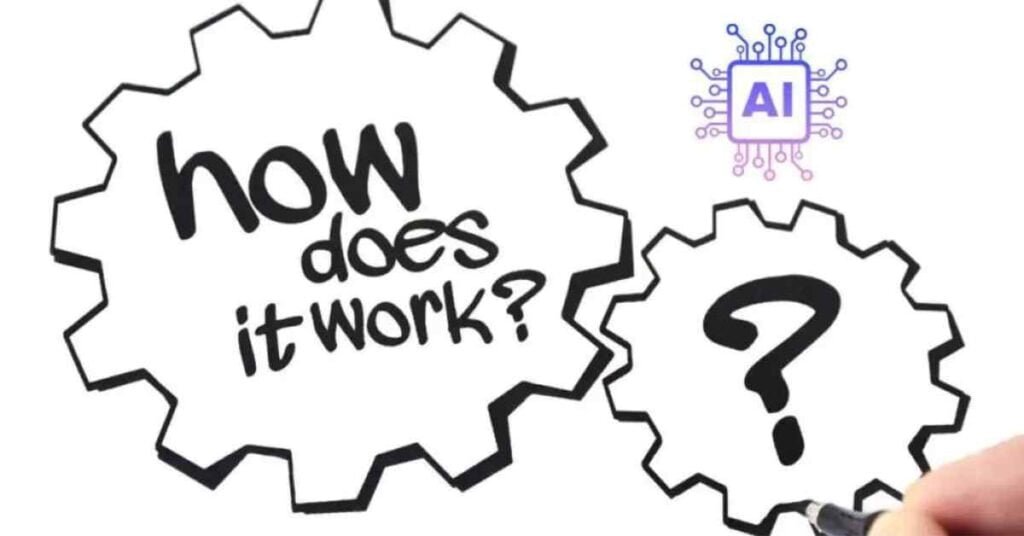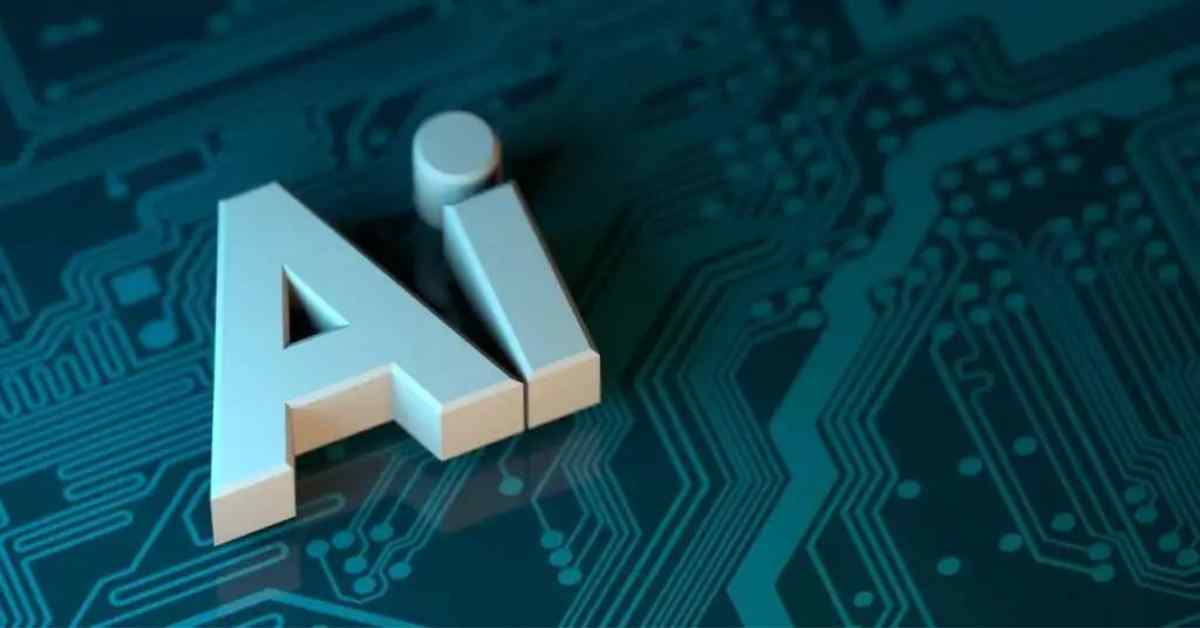Imagine you are scrolling through your favorite newsfeed, bombarded with articles about artificial intelligence (AI). Self-driving cars, AI-powered medical diagnoses, even robots writing news stories – it seems AI is everywhere. But, what is the best definition of Artificial Intelligence?
Exactly, Artificial intelligence (AI) can be understood as smart machines. These machines can learn and act like humans in some ways, but without actually being alive or conscious. They can do things that were once thought only humans could do, like recognizing faces in photos or playing complex games.
Note: This article includes AI-generated sections for accuracy, all reviewed and edited by human experts.
Key-Points
what is the best definition of artificial intelligence With examples?
Artificial Intelligence (AI), often referred to as AI intelligence, encompasses the development of computer systems capable of performing tasks that traditionally require human intelligence. It’s a fascinating field that merges technology with cognitive abilities, revolutionizing various industries.
Here are the Examples of Artificial Intelligence (AI).
Supercharge your Shopping:
Feeling overwhelmed by endless choices online? AI algorithms analyze your browsing history and past purchases, suggesting items you might actually like. No more scrolling for hours – just AI-powered shopping bliss!
Healthcare
AI is transforming medicine. Imagine a doctor using AI-powered software to analyze X-rays and scans, spotting potential issues humans might miss. This technology can lead to earlier diagnoses and better health outcomes.
Driving into the Future
Self-driving cars rely heavily on AI to navigate roads, recognize traffic signals, and even predict pedestrian movement. AI is making our streets safer and our commutes more relaxing.
AI: It’s Everywhere!
From your smartphone’s voice assistant to the spam filter in your email, AI is quietly working behind the scenes, making our lives easier and more efficient.
A recent study by [ McKinsey & Company, “Global AI survey 2023” ] found that 80% of businesses are already using or actively exploring AI in some way.
Experts like Andrew Ng, a world-renowned AI leader, believe AI can revolutionize fields like education, climate change, and even space exploration. The key will be harnessing AI responsibly and ethically.
Andrew Ng
How does AI work?

Artificial Intelligence (AI) technology, drawing inspiration from the human brain, operates through intricate processes to perform specific tasks. Here’s a breakdown of how AI works:
Step 1: Data
Imagine a hungry monster – but instead of eating food, it devours information! This monster is the AI system, and its food is data. AI developers feed the system with massive amounts of data relevant to a specific task.
Think of a self-driving car. The data might include videos of real-world driving situations, traffic signs, and pedestrians. The more data the AI chomps on, the better it understands the world around it.
Step 2: Processing Power
Once the AI has a data belly full, it needs to make sense of it all. Think of this like sorting through a giant pile of Legos. Special computer programs help the AI analyze the data, identify patterns, and connect the dots.
Step 3: Building the AI Model
After processing all that data, the AI creates an internal model – kind of like a mental map. This AI model helps the AI recognize patterns in new information.
Here’s an example: Imagine training an AI to recognize dog breeds. You show it thousands of pictures of Golden Retrievers, Poodles, and Bulldogs. The AI builds a mental map based on fur color, facial features, and body shapes. Now, when it sees a picture of an unfamiliar dog, it can use this map to guess the breed with surprising accuracy.
Step 4: Putting It All Together
This is where the magic happens! The AI uses its data-trained model to make predictions or decisions on new information. For example, a music streaming service might use AI to analyze your listening habits and recommend songs you’ll love.
AI vs. Human Brain
While AI might seem like a mini-brain, there’s a key difference. Our brains learn and adapt through a lifetime of experiences. AI, on the other hand, excels at specific tasks based on the data it’s been trained on.
Types of Artificial Intelligence (AI)
Artificial intelligence (AI) is a vast and exciting field, with different types of AI tackling various tasks. Think of it like a sports league – each the player has unique strengths and plays a specific role. Let’s explain,
Narrow AI Or Weak AI
These are the workhorses of the AI world, excelling at one specific task after being trained on massive amounts of data. Imagine a champion weightlifter – incredibly strong in their area, but not suited for everything.
- Example: Your phone’s facial recognition unlock – a Narrow AI trained on countless photos of your face to unlock your phone with impressive accuracy.
Artificial General Intelligence (AGI) or Strong AI
Considered the holy grail of AI, Artificial General Intelligence (AGI) is a theoretical future where AI can mimic human intelligence. Imagine a decathlon champion – excelling in all areas!
- Example: While not yet achieved, an AGI could translate languages perfectly, write different creative content forms, or even solve complex scientific problems.
Artificial Superintelligence (ASI)
This one belongs firmly in science fiction (for now!). An ASI would surpass human intelligence in all aspects, posing both potential benefits and challenges. Think of a team so strong it rewrites the rules of the game entirely!
Now, Let’s Meet the Supporting Cast:
Reactive Machines
These are the simplest AI, responding to stimuli without learning or memory. Imagine a vending machine – it dispenses a drink when you insert money but don’t remember your past purchases.
Limited Memory Machines
A step up, these AI can learn from past experiences to make better decisions. Think of a spam filter that gets better at identifying unwanted emails over time.
Theory of Mind AI
(Theoretical) This AI could understand and respond to human emotions – like a teammate who anticipates your next move on the field.
Self-Aware AI: (Purely hypothetical) This AI would possess consciousness and self-awareness, blurring the lines between machine and human intelligence.
So, the next time you interact with AI, remember – there’s a whole team working behind the scenes!
Core Capabilities of AI

Let’s dive into the core capabilities of AI that are revolutionizing the world around us:
Machine Learning (ML)
Imagine a student constantly learning from experience. That’s essentially what machine learning does! It uses algorithms to analyze vast amounts of data, identify patterns, and make predictions without explicit programming. For example, ML algorithms power recommendation systems on e-commerce sites, personalizing your shopping experience based on past purchases.
Deep Learning (DL)
Think of deep learning as a super-powered version of machine learning. It utilizes complex artificial neural networks, inspired by the human brain, to tackle even more intricate tasks. Deep learning excels at tasks like image recognition, where it can analyze photos and videos with incredible accuracy. Did you know facial recognition software used for security purposes often leverages deep learning algorithms?
Natural Language Processing (NLP)
Ever chatted with a virtual assistant or used voice commands on your phone? That’s NLP in action! It allows computers to understand and process human language. From deciphering complex legal documents to translating languages in real-time, NLP is breaking down communication barriers and fostering a more connected world.

Computer Vision (CV)
Imagine a computer “seeing” the world the way we do. That’s the magic of computer vision! It enables machines to extract meaningful information from digital images and videos. From self-driving cars navigating busy streets to medical imaging software analyzing X-rays, computer vision is revolutionizing how we interact with and interpret the visual world.
“AI is not here to replace humans, but to augment our capabilities and help us achieve more than ever before.”
Dr. Fei-Fei Li, Co-Director of the Stanford Human-Centered AI Institute
Applications of Artificial Intelligence
Let’s dive into some exciting ways AI is making waves across different fields:
AI in Your Computer
- Imagine A virtual assistant that anticipates your needs before you even ask. AI-powered software can predict what files you’ll access next or even suggest helpful edits as you write. Gone are the days of searching for lost documents – AI can learn your habits and preferences, streamlining your workflow.
AI in Healthcare
- The Future: AI can analyze medical scans with superhuman accuracy, helping doctors identify potential problems earlier and improve diagnoses. Imagine a world where AI can detect a tumor in an X-ray even before a radiologist spots it, leading to earlier treatment and potentially saving lives.
AI in Business
- Businesses use AI to personalize customer experiences, optimize marketing campaigns, and even automate tasks like scheduling appointments. For instance, an e-commerce store might use AI to recommend products based on a customer’s past purchases, creating a more engaging shopping experience that leads to increased sales.
AI in Cybersecurity
- Cybercriminals are constantly evolving. AI-powered security systems can learn and adapt to detect and prevent cyberattacks in real time. Think of it as a digital guardian that learns new hacking tactics over time, constantly improving its defenses to keep your data safe.
AI in Accounting
- AI can automate data entry, analyze financial trends, and even identify potential fraud, freeing up accountants for more strategic work. Imagine an AI system that automatically categorizes expenses and generates reports, allowing accountants to focus on financial planning and analysis.
AI in Digital Marketing
- Targeted Advertising: AI can analyze customer data to personalize ads and marketing messages, reaching the right people with the right offers at the right time. Instead of bombarding everyone with irrelevant ads, AI can tailor messages to specific demographics and interests, leading to more effective marketing campaigns.
AI in Medicine
- AI can analyze vast datasets to accelerate the development of new medications, potentially leading to faster breakthroughs in healthcare. Imagine AI systems sifting through mountains of research data to identify promising drug candidates, speeding up the process of bringing life-saving treatments to patients.
Advantages of AI
Artificial intelligence (AI) is rapidly changing our world, but with such innovation comes a responsibility to understand its potential pitfalls alongside its many benefits.
Supercharged Productivity
- Factory Floors on Autopilot: AI-powered robots handle repetitive tasks like welding, painting, and assembly line operations. This frees up human workers for complex, strategic thinking and innovation.
- Data Entry Drudgery Vanishes: From automatically extracting information from documents to processing invoices, AI tackles tedious data entry with incredible speed and accuracy, allowing humans to focus on analysis and decision-making.
Personalized Experiences
From suggesting movies you’ll love to recommending products you’ll use, AI tailors experiences to your unique needs. It’s like having a virtual assistant who anticipates your every wish!
Medical Marvels
AI can analyze medical scans with superhuman accuracy, aiding doctors in earlier diagnoses and potentially saving lives. Imagine an AI system detecting a tumor in an X-ray even before a radiologist does, allowing for faster treatment.
Disadvantages of AI
Let’s talk about some of the disadvantages of Artificial Intelligence (AI).
Job displacement
As AI automates tasks, certain jobs could become obsolete. Experts like Andrew Yang, an AI entrepreneur, warn about the need for retraining programs to ensure a smooth transition for workers whose roles might be impacted by AI.
“52% of employed US adults are concerned that AI will replace their jobs.”
Mitre
Bias in the Machine
AI algorithms trained on biased data can perpetuate those biases in their decisions. Imagine a loan approval system that unintentionally discriminates against certain demographics. We need to ensure AI is developed and used responsibly to avoid perpetuating societal inequalities.
The “Black Box” Problem
Sometimes, AI decisions lack transparency, making it difficult to understand how an AI system arrived at a specific conclusion. This lack of explainability can raise concerns about accountability and fairness.
Neural network in Artificial Intelligence (AI)
Here’s why neural networks are so powerful in AI:
- Pattern Recognition Champions: They excel at identifying patterns in data, whether it’s recognizing faces in photos or predicting stock market trends.
- Learning Machines: Unlike traditional computer programs, neural networks can continuously learn and improve based on new data they encounter. Think of it like a student getting better at solving math problems the more they practice.
Real-World Examples of Neural Networks in Action:
- The AI assistant on your phone: Uses a neural network to understand your voice commands and respond intelligently.
- The recommendation system on your favorite streaming service: Analyzes your listening habits to suggest songs you’ll love, powered by a neural network trained on vast amounts of music data.
What is the Large Language Model (LLM)?
The Large Language Model (LLM) stands as a testament to the incredible advancements in artificial intelligence. It’s a sophisticated algorithm designed to comprehend and generate human-like text, capable of understanding the context, nuances, and complexities of language.
Power of LLM
LLMs, like Gemini, have transformed various industries, from customer service to content creation. Their ability to generate coherent text has revolutionized automated content production, making tasks like writing, summarizing, and translating more efficient and accessible.
What is Generative Artificial Intelligence (AI)?
Generative AI refers to a type of artificial intelligence (AI) that can create new and original content, like images, video, text, or music. Unlike traditional AI models that focus on analyzing and classifying existing data, Generative AI learns from massive datasets of existing content and uses that knowledge to produce entirely new and creative outputs.
Applications of Generative AI
- Creating realistic images and videos: Imagine generating product mockups or designing marketing materials with the help of AI.
- Composing music and writing different creative text formats: Generative AI can assist musicians in composing new melodies or even help writers overcome writer’s block by suggesting creative text formats.
- Developing new materials and drugs: Scientists can use Generative AI to explore new material properties or even design potential drug candidates with specific functionalities.
History Of Artificial Intelligence (AI)
Let’s take a whirlwind tour through the history of AI:
The Dawn of AI (1950s)
- 1950: Alan Turing publishes his seminal paper “Computing Machinery and Intelligence,” introducing the “Turing Test” as a measure of machine intelligence.
- 1956: The Dartmouth Workshop, considered the founding event of AI research, brings together leading scientists to discuss the possibilities of artificial intelligence.
Early Struggles and Progress (1960s-1980s)
- 1960s: Initial optimism is met with challenges as AI research encounters limitations in computational power and theoretical frameworks.
- 1970s: Expert systems emerge, specializing in solving problems within specific domains.
- The 1980s: The “AI Winter” sets in, a period of reduced funding and progress due to the limitations of the time.
Resurgence and Revolution (1990s-Present)
- 1990s: The rise of machine learning algorithms and advancements in computing power led to a renewed interest in AI.
- 2000s: Deep learning techniques like artificial neural networks revolutionize AI, leading to breakthroughs in computer vision, natural language processing, and other areas.
- 2010s-Present: AI applications explode across various industries, from self-driving cars to medical diagnosis. Ethical concerns and debates about the future of AI take center stage.
Conclusion
The potential of AI is undeniable – from accelerating scientific progress to improving global healthcare. However, ethical considerations and responsible development practices are paramount. We must be vigilant in addressing potential biases in AI algorithms, ensuring transparency in AI decision-making, and prioritizing the well-being of human workers in the face of automation.
FAQs
1. What is an example of an intelligent automation solution that uses artificial intelligence (AI)?
Many examples exist! One common application is the AI-powered chatbot that assists customers with inquiries and tasks. These chatbots use natural language processing (NLP) to understand user questions and provide relevant responses, automating customer service interactions.
2. Why has machine learning become the dominant form of artificial intelligence?
Machine learning’s dominance stems from its ability to “learn” from data without explicit programming. This adaptability allows AI systems to tackle complex tasks and improve performance over time, making them highly versatile across various applications.
3. In supervised machine learning, what’s the difference between training data and test data?
Training data is the fuel for machine learning. It’s a massive dataset of labeled examples used to train the AI model. The model “learns” patterns and relationships within this data. Test data is a separate, unlabeled dataset used to evaluate the model’s performance after training. It helps assess the model’s ability to handle unseen data and generalize its learnings.
4. What’s the biggest difference between symbolic systems and machine learning?
Symbolic systems rely on handcrafted rules and knowledge bases to solve problems. They excel at tasks with well-defined rules but struggle to adapt to new situations. Machine learning, on the other hand, learns from data, allowing it to handle complex problems and improve over time without explicit rule programming.
5. ChatGPT, Google Bard, and Anthropic Claude are examples of which type of generative AI model?
These models fall under the category of Large Language Models (LLMs). LLMs are a type of generative AI trained on massive amounts of text data. This allows them to generate human-quality text, translate languages, write different creative text formats, and answer your questions in an informative way, just like me!
6. What is responsible AI?
Responsible AI emphasizes the ethical development and use of AI. This includes considerations like bias mitigation, transparency in decision-making, and ensuring AI benefits humanity as a whole.
7. What is an artificial intelligence chatbot?
An AI chatbot is a computer program that simulates conversations with humans. It uses natural language processing (NLP) to understand user queries and respond with relevant information or complete tasks. AI chatbots are increasingly used in customer service, education, and entertainment.
